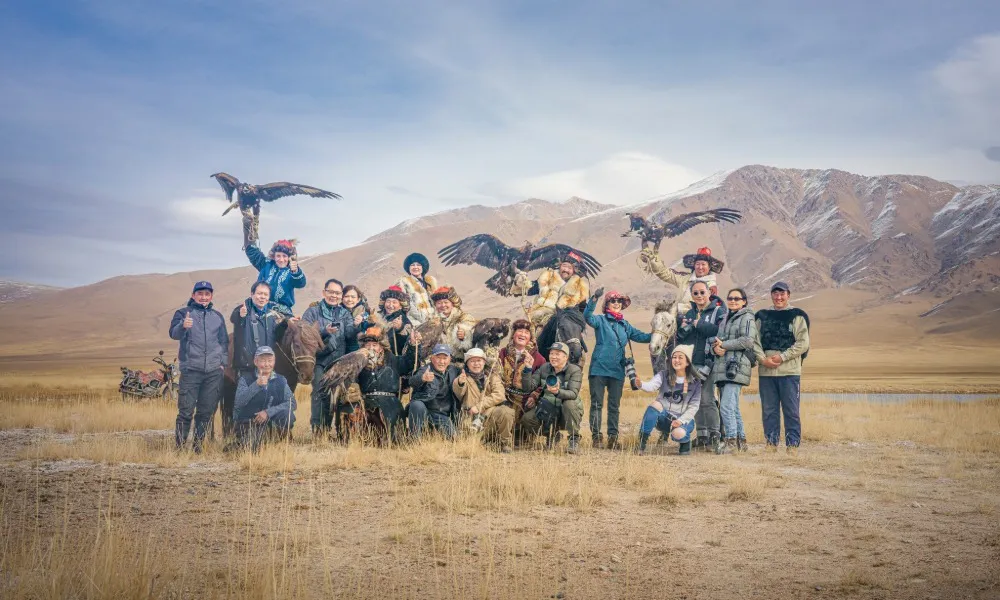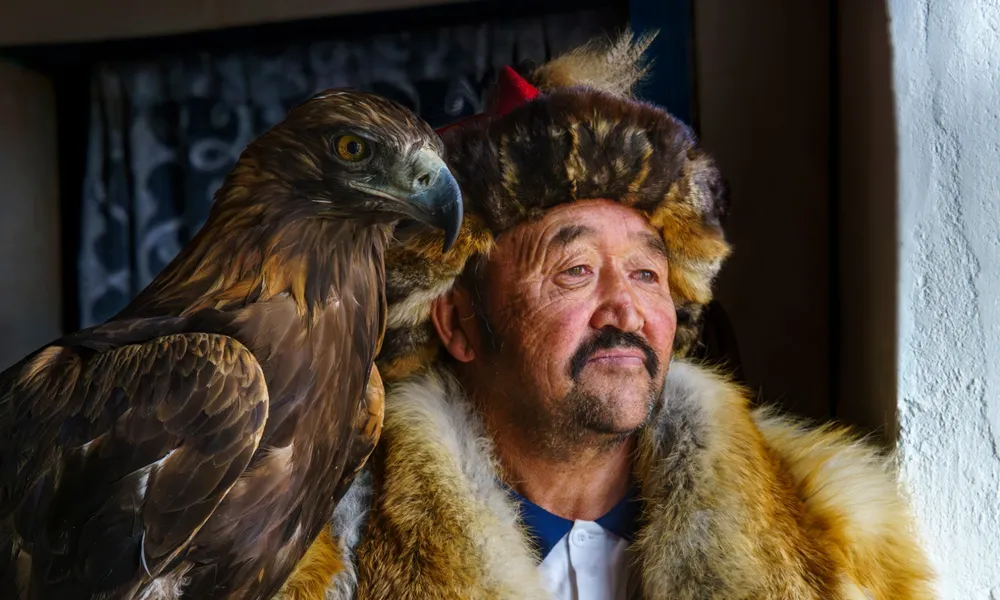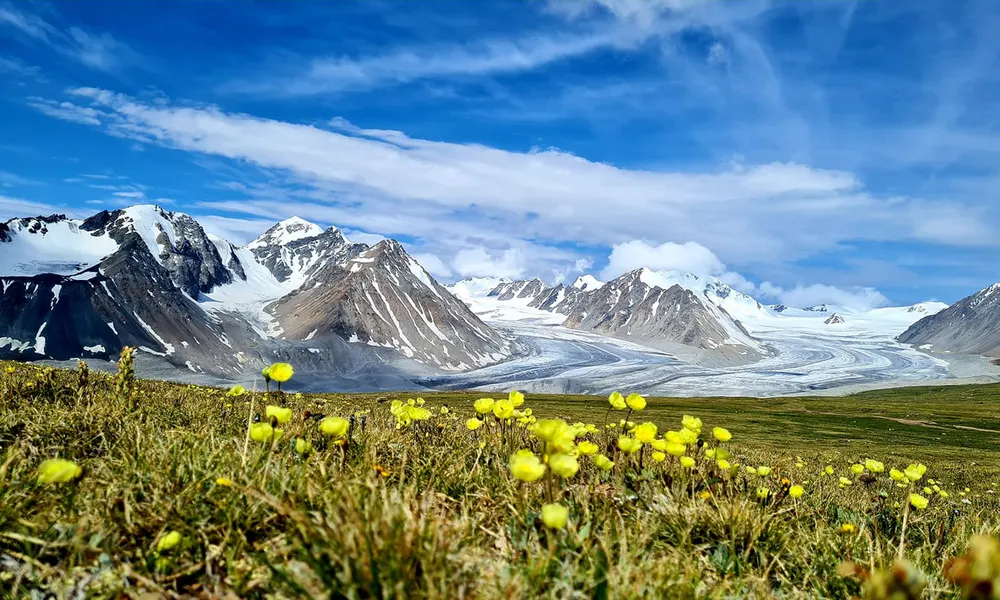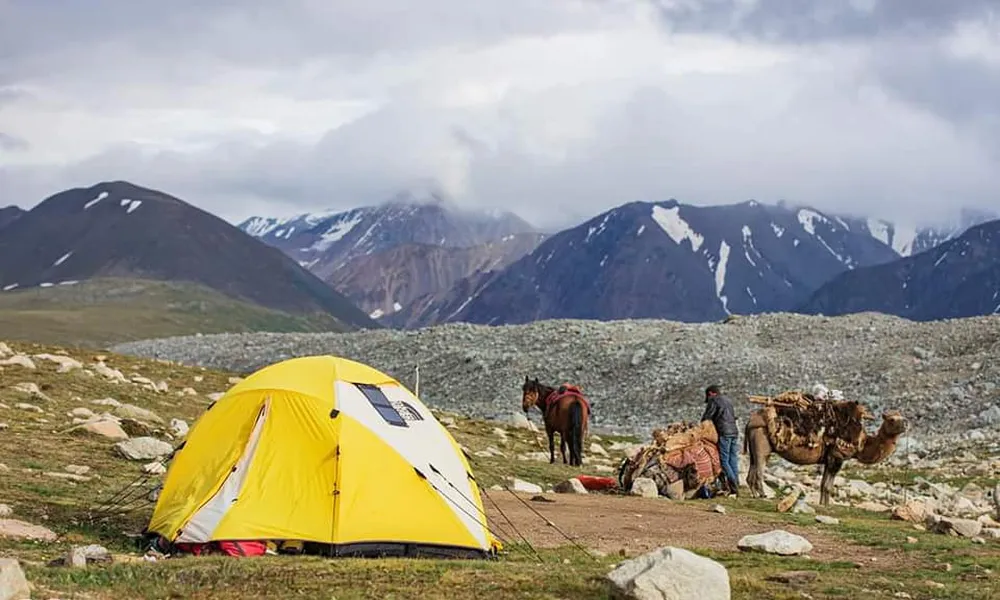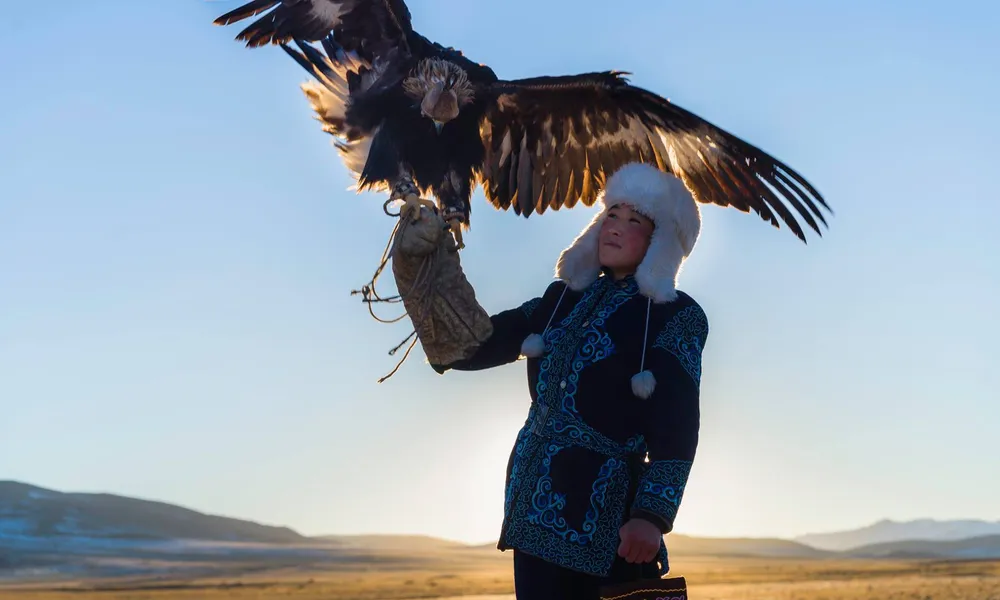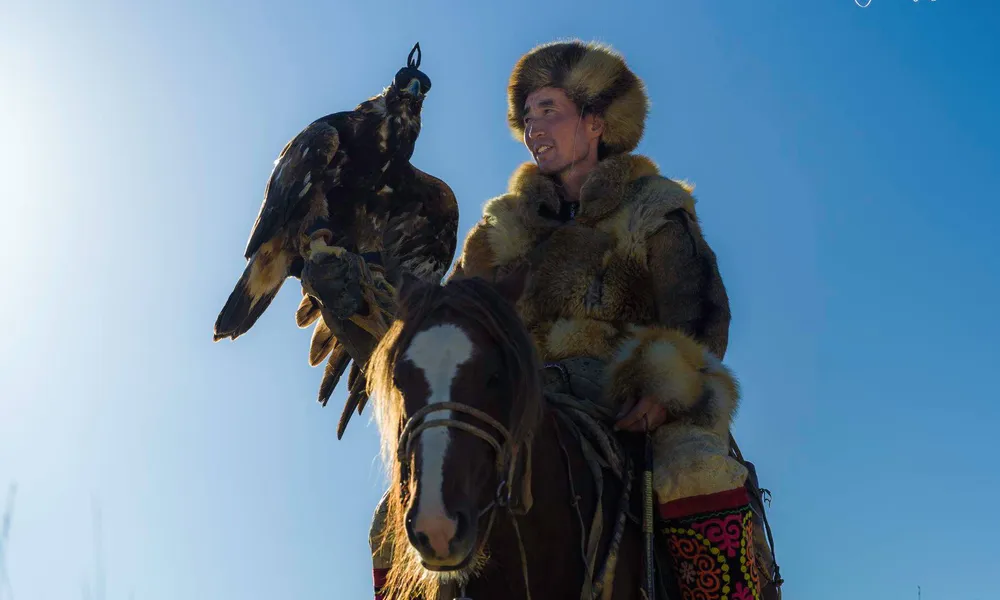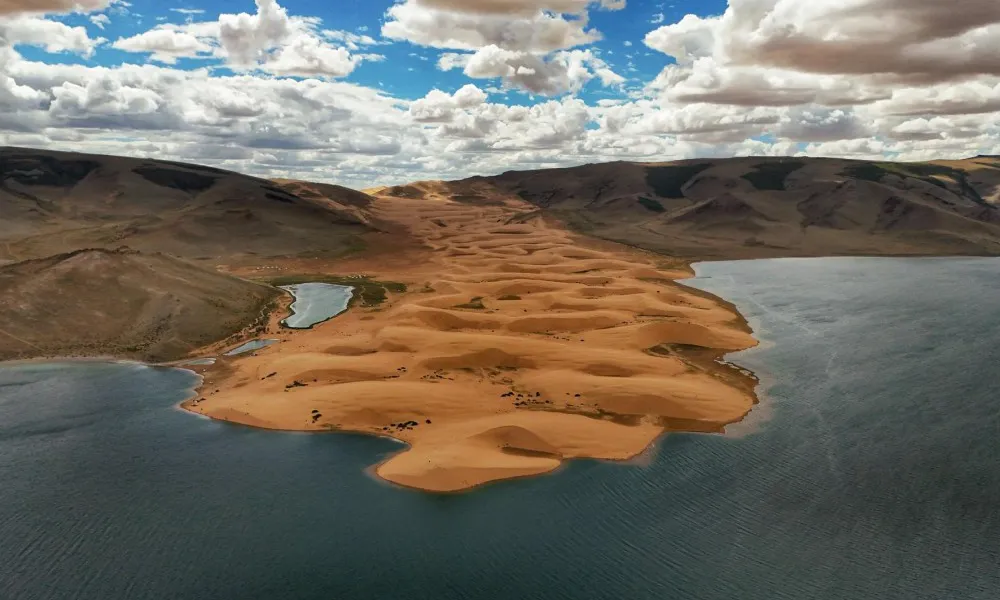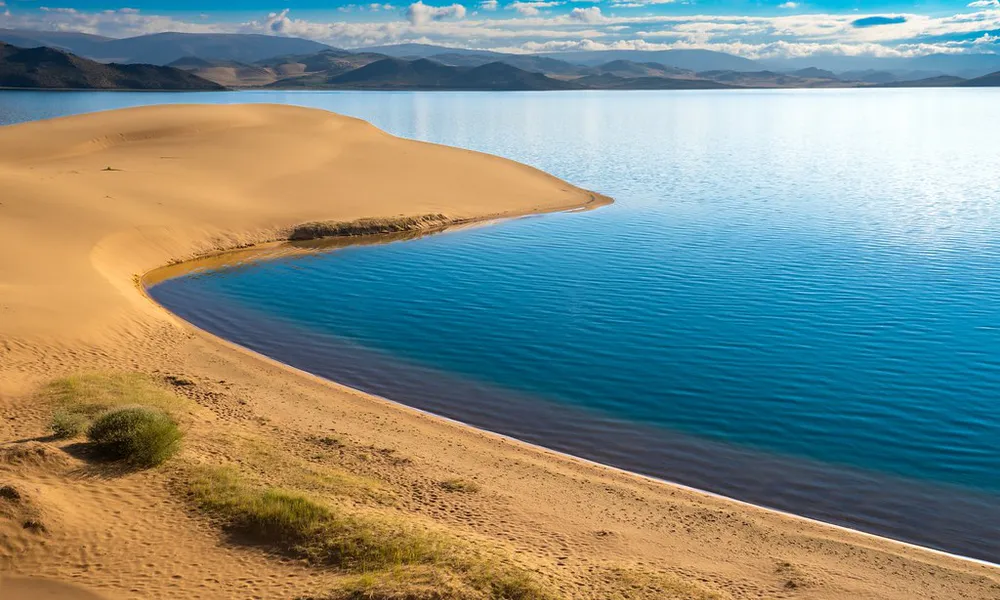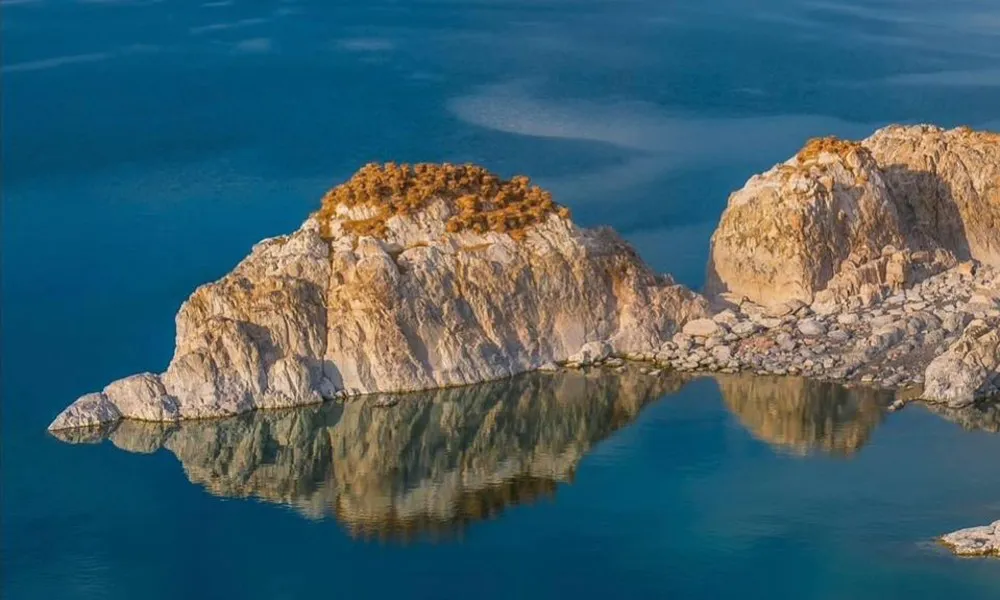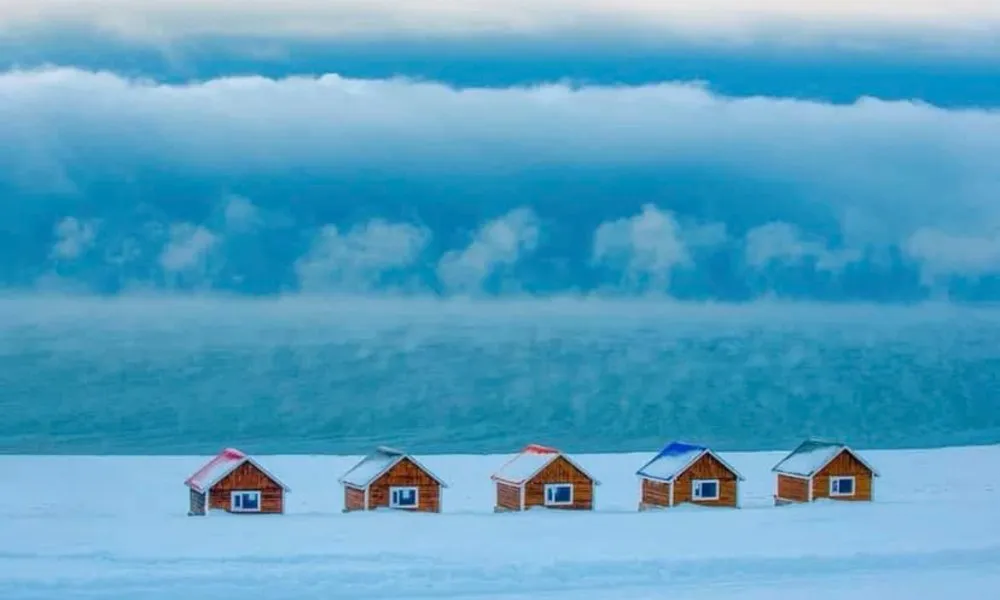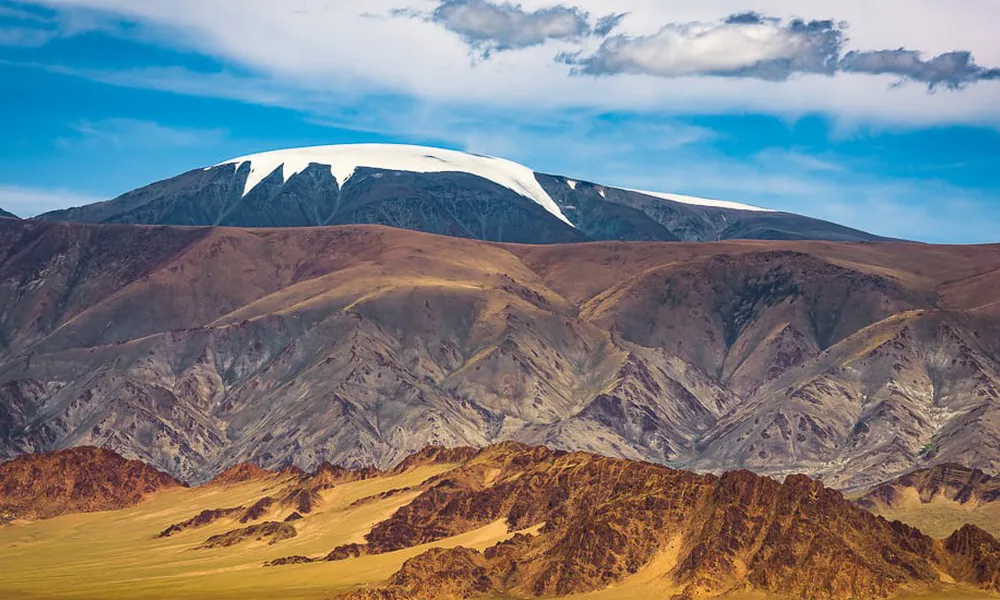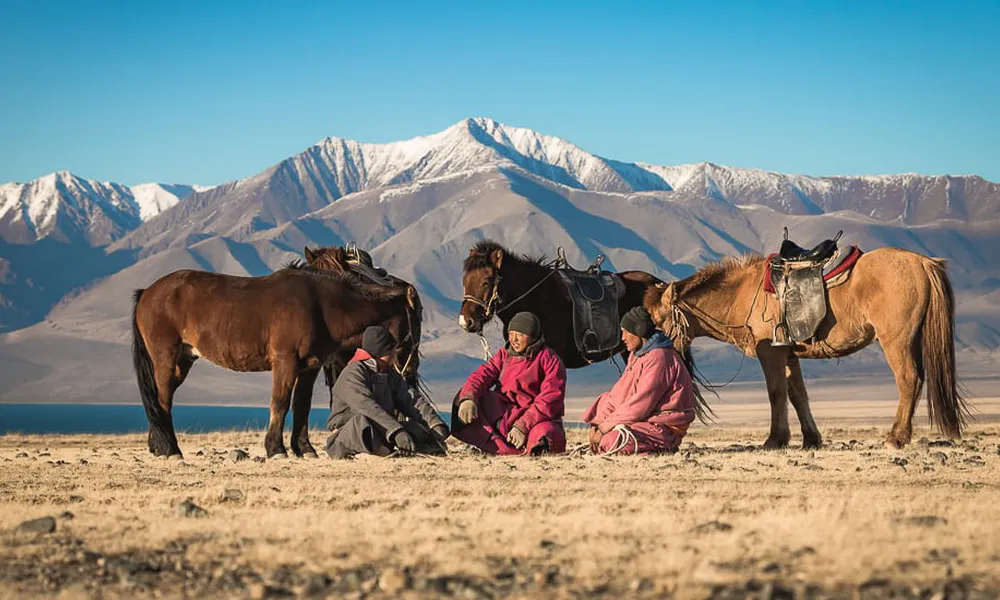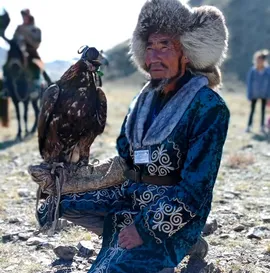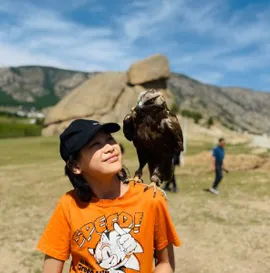Western Mongolia
Western Mongolia is Mongolia’s wild frontier where the Altai Mountains, northernmost reach of the Himalayan system, rise at the tri-border with Russia, China, and Kazakhstan. Glacial valleys feed rivers born of ice, flowing toward high-altitude lakes like Khoton and Khurgan, nestled beneath towering peaks. This dramatic landscape is home to Kazakh eagle hunters, Tuvan throat singers, and nomadic herders. Travelers discover turquoise lakes like Uureg and Tolbo, windswept dunes, and ancient petroglyphs. Horseback journeys, rugged 4x4 routes, and adventurous motorcycle rides reveal hidden valleys and timeless camps in a region that’s untamed, soulful, and unforgettable.
Altai Tavan Bogd National Park
Altai Tavan Bogd National Park is Mongolia’s westernmost protected area, spanning over 6,300 km² in Bayan-Ulgii province. It’s named after the “Five Holy Peaks,” including Khüiten Peak (4,380 m), Mongolia’s highest. The park features vast glaciers like Potanin, high-altitude lakes such as Khoton, Khurgan, and Dayan, and rich biodiversity including snow leopards, ibex, and golden eagles. Culturally, it’s home to Mongol- Kazakhs, Mongol- Tuvans, and Mongol-Uriankhai peoples. Kazakh Mongolians are among the few remaining ethnic groups in the world who practice traditional falconry with golden eagles. UNESCO-listed petroglyphs and burial sites dot the valleys. Trekking, camping, homestays, and off-road motorcycle adventures offer immersive access to this glacial, alpine world.
Eagle Hunters of Western Mongolia
Eagle hunters in western Mongolia are among the world’s few remaining communities who practice traditional falconry as a living heritage. For generations, they’ve trained golden eagles to hunt foxes and hares during the harsh winter months, forging deep bonds through daily care and whispered commands. This ancient skill, recognized by UNESCO as Intangible Cultural Heritage of Humanity, is passed from parent to child as part of nomadic life. Around 400 hunters remain today, most descended from families who migrated from Kazakhstan and western China in the early 20th century. Their way of life blends resilience, artistry, and harmony with nature.
Ulaagchnii Khar Us Lake National Park
Ulaagchin Khar Nuur is a warm, freshwater lake in Zavkhan province, surrounded by golden sand dunes, alpine hills, and soft sand shores making it one of Mongolia’s most comfortable natural beach destinations. Its clear waters host fish like pike, perch, and lenok trout, and support rich birdlife. The lake connects to the scenic Mukhartiin Gol, a winding river that disappears into the sand, and lies near Semjit Khad, a striking rock formation popular for hiking and photography.
Khyargas Lake Natural Area
Khyargas Nuur is a vast saltwater lake in Uvs province , stretching over 75 km with depths up to 80 meters. Its clear, mineral-rich waters and dramatic marble cliffs including formations said to resemble a crocodile’s spine create a surreal steppe landscape. The lake’s most iconic feature is Khetsuu Khad, a towering rock that rises from the water and hosts nesting cormorants and pelicans. Visitors can hike, photograph the cliffs, birdwatch, and explore nearby Airag Lake, which connects to Khyargas via the Zavkhan River. Surrounding valleys are home to nomadic herding families with horses, yaks, camels, sheep, and goats. Guests may encounter seasonal Nomad Gers, felt-making, and warm hospitality woven into daily life.
Mount Tsambagarav National PArk
Rising to 4,193 meters, this snow-capped peak anchors a landscape of glaciers, alpine meadows, turquoise lakes, and rocky gorges. It’s a favorite among mountaineers for its dramatic ridgelines, technical routes, and panoramic views across the Mongol Altai. The area is home to ibex, argali, marmots, and elusive snow leopards, and surrounded by valleys like Namarjin and Bayangol, ideal for hiking and horseback travel. In summer, Kazakh and Mongol herding families settle nearby with horses, yaks, and eagles, offering warm hospitality and glimpses into traditional life. Visitors can trek, ride, photograph wildlife, and explore ancient deer stones and balbals scattered across the highlands.


